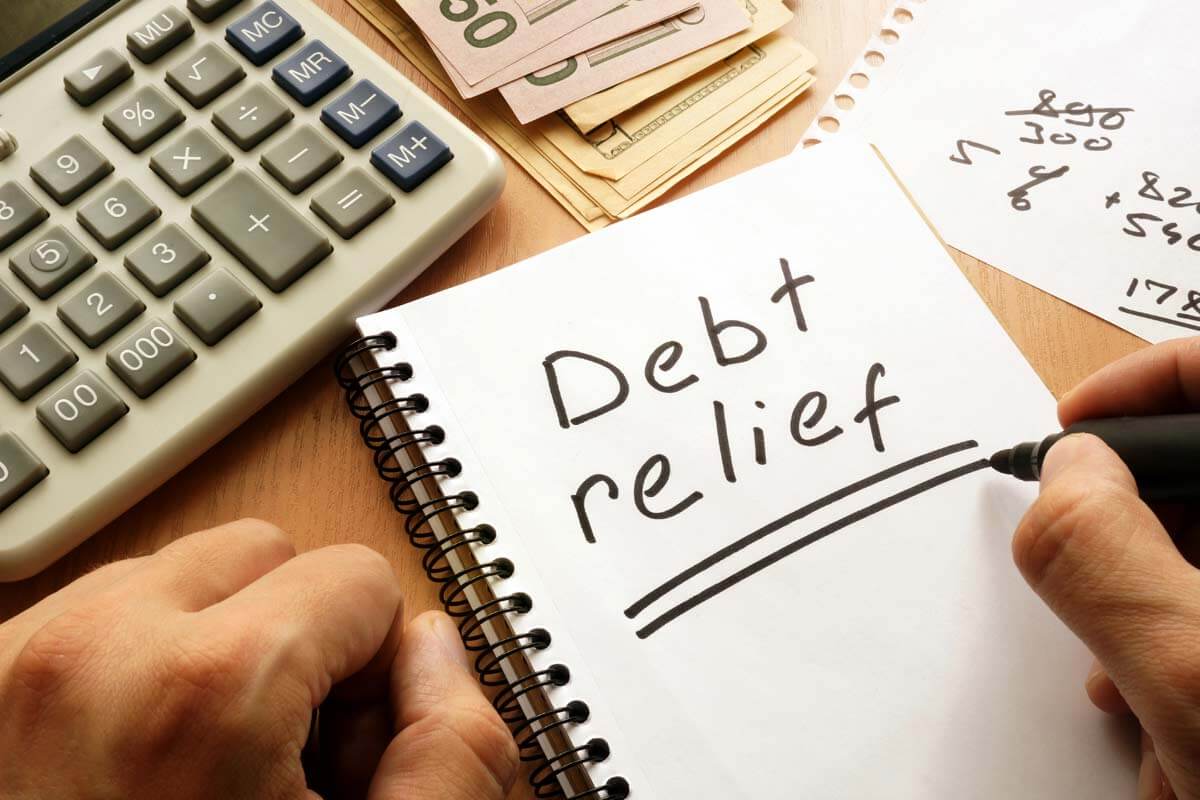Bankruptcy Discharge: What It Means for Your Debt Relief

Bankruptcy can be a daunting experience for individuals overwhelmed with debts. However, one of the potential benefits of filing for bankruptcy is the opportunity to obtain a bankruptcy discharge. Understanding what a bankruptcy discharge entails and how it can impact your debt relief journey is crucial.
In this article, we will explore the concept of the bankruptcy discharge, its benefits, the types of debts that can and cannot be discharged, the process of obtaining a discharge, its effects on credit, rebuilding credit after bankruptcy, common misconceptions, the importance of hiring a bankruptcy attorney, and alternatives to bankruptcy.
Introduction
Bankruptcy is a legal process that allows individuals or businesses to seek relief from overwhelming debts. It provides a fresh start by eliminating or restructuring debts, but it also has long-term consequences. One of the critical aspects of bankruptcy is the discharge, which is a court order that releases debtors from their obligation to pay certain debts.
However, not all debts can be discharged, and the process of obtaining a discharge can be complex. It is essential to understand the implications of bankruptcy discharge before considering it as a debt relief option.
Understanding Bankruptcy Discharge
The bankruptcy discharge is a legal order that extinguishes a debtor’s personal liability for certain debts, making them legally unenforceable. It is a powerful tool that allows debtors to eliminate or reduce their debts and obtain a fresh financial start.
However, it is crucial to note that not all debts are eligible for discharge, and the process of obtaining a discharge can vary depending on the type of bankruptcy filed.
Read More: How to Become an Offshore Car Accident Lawyer in 2023
Chapter 7 Bankruptcy Discharge
In a Chapter 7 bankruptcy, also known as liquidation bankruptcy, the debtor’s non-exempt assets are sold to pay off creditors, and the remaining eligible debts are discharged. Chapter 7 bankruptcy discharge is typically faster, usually taking a few months, and provides a clean slate for debtors to start afresh.
Chapter 13 Bankruptcy Discharge
In a Chapter 13 bankruptcy, also known as reorganization bankruptcy, the debtor proposes a repayment plan to repay a portion of their debts over a period of 3 to 5 years. Once the repayment plan is completed, the remaining eligible debts are discharged. Chapter 13 bankruptcy discharge requires strict adherence to the repayment plan and may take longer than Chapter 7 discharge.
Benefits of Bankruptcy Discharge
Bankruptcy discharge offers several benefits to debtors struggling with overwhelming debts. Some of the key benefits include:
Elimination of Debts
The primary benefit of a bankruptcy discharge is the elimination of debts. Discharged debts are legally unenforceable, and debtors are no longer obligated to repay them. This can provide much-needed relief from the burden of unmanageable debts and pave the way for a fresh financial start.
Protection from Creditors’
Bankruptcy discharge also provides protection from creditors’ collection actions. Once a discharge is granted, creditors are legally prohibited from attempting to collect discharged debts, including harassing phone calls, wage garnishments, or lawsuits. This can bring peace of mind to debtors and allow them to focus on rebuilding their financial situation.
Opportunity for a Fresh Start
Bankruptcy discharge can offer debtors the opportunity for a fresh start by wiping out or reducing their debts. This allows them to have a clean slate and start rebuilding their financial life without the constant burden of overwhelming debts.
Types of Debts Dischargeable in Bankruptcy

Not all debts can be discharged in bankruptcy. It’s important to understand which debts can be discharged and which cannot. Generally, the following types of debts can be discharged in bankruptcy:
Credit Card Debts
Credit card debts are generally dischargeable in bankruptcy, including balances on personal credit cards, store credit cards, and other revolving credit accounts.
Medical Bills
Unpaid medical bills can also be discharged in bankruptcy, providing relief to debtors who are struggling with significant medical debts.
Personal Loans
Personal loans, such as payday loans or unsecured personal loans, are typically dischargeable in bankruptcy.
Utility Bills
Past-due utility bills, including electricity, gas, water, or telephone bills, can be discharged in bankruptcy.
Business Debts
If you are a business owner and personally liable for business debts, such as business credit cards or loans, those debts may be dischargeable in bankruptcy.
Lawsuit Judgments
Certain lawsuit judgments, such as those related to accidents or personal injury claims, may be discharged in bankruptcy, although exceptions apply.
Debts Not Dischargeable in Bankruptcy
While bankruptcy discharge provides relief for many types of debts, certain debts are not dischargeable in bankruptcy. It’s essential to be aware of these debts before considering bankruptcy as a debt relief option. Some common examples of debts that are not dischargeable in bankruptcy include:
Child Support and Alimony
Debts related to child support and alimony are not dischargeable in bankruptcy. Debtors are still obligated to pay these debts even after obtaining a discharge.
Certain Taxes
Some taxes, such as recent income taxes or tax liens, may not be dischargeable in bankruptcy.
Student Loans
In most cases, student loans are not dischargeable in bankruptcy, unless the debtor can prove undue hardship, which is a challenging standard to meet.
Debts from Fraud or Misrepresentation
Debts incurred from fraud or misrepresentation, including debts resulting from embezzlement, larceny, or other fraudulent activities, may not be dischargeable in bankruptcy.
Debts from Willful and Malicious Injury
Debts resulting from willful and malicious injury to another person or property may not be dischargeable in bankruptcy.
The Process of Obtaining a Bankruptcy Discharge
The process of obtaining a bankruptcy discharge can be complex and varies depending on the type of bankruptcy filed. It typically involves the following steps:
Filing Bankruptcy Petition
The debtor initiates the bankruptcy process by filing a bankruptcy petition with the bankruptcy court. The petition includes detailed information about the debtor’s financial situation, assets, liabilities, income, and expenses.
Attending Credit Counseling
Before a bankruptcy discharge can be granted, debtors are required to complete a credit counseling course from an approved agency. This course aims to provide debtors with financial education and guidance on managing debts.
Meeting with the Trustee
After filing the bankruptcy petition, debtors are required to attend a meeting with the bankruptcy trustee. The trustee reviews the debtor’s financial situation and verifies the accuracy of the information provided in the petition.
Confirmation of Repayment Plan (Chapter 13)
If filing for Chapter 13 bankruptcy, the debtor’s proposed repayment plan must be confirmed by the bankruptcy court. This plan outlines how the debtor will repay their debts over a specified period of time.
Waiting Period
Once all requirements are met, there is a waiting period during which creditors have an opportunity to object to the discharge. If no objections are raised, the court may grant the bankruptcy discharge.
Receiving the Bankruptcy Discharge
If bankruptcy discharge is granted, debtors receive an official court order that legally eliminates their dischargeable debts, providing them with debt relief.
Rebuilding After Bankruptcy Discharge
Obtaining a bankruptcy discharge is just the first step toward achieving long-term debt relief. It’s essential for debtors to take proactive steps to rebuild their financial situation after bankruptcy. Here are some tips:
Budgeting and Financial Planning
Creating a budget and financial plan is crucial in managing money effectively after bankruptcy. Debtors should track their expenses, prioritize savings, and avoid unnecessary debts.
Building an Emergency Fund
Having an emergency fund is essential to handle unexpected expenses without relying on credit. Debtors should aim to save three to six months’ worth of living expenses in an emergency fund.
Rebuilding Credit
Rebuilding credit is a critical step after bankruptcy. Debtors can start by obtaining a secured credit card or a credit builder loan, making timely payments, and keeping credit utilization low.
Read More: Billions in Damages: The Growing Cost of UK Maternity Care Negligence
Living Within Means
Living within means and avoiding new debts is crucial in maintaining financial stability after bankruptcy. Debtors should resist the urge to overspend and focus on living a frugal lifestyle.
Seeking Financial Counseling
Debtors may benefit from seeking financial counseling to gain additional guidance on managing their finances, budgeting, and building credit.
Conclusion
In conclusion, a bankruptcy discharge can provide significant debt relief by eliminating or reducing debts and protecting debtors from creditor collection actions. It’s important to understand the types of debts that can and cannot be discharged in bankruptcy and go through the proper legal process to obtain a discharge. Rebuilding after bankruptcy discharge requires careful financial planning, budgeting, credit rebuilding, and living within means. Seeking financial counseling can also be beneficial. Remember that obtaining a bankruptcy discharge is not the end of the journey, but rather a fresh start toward a healthier financial future.


2 Comments